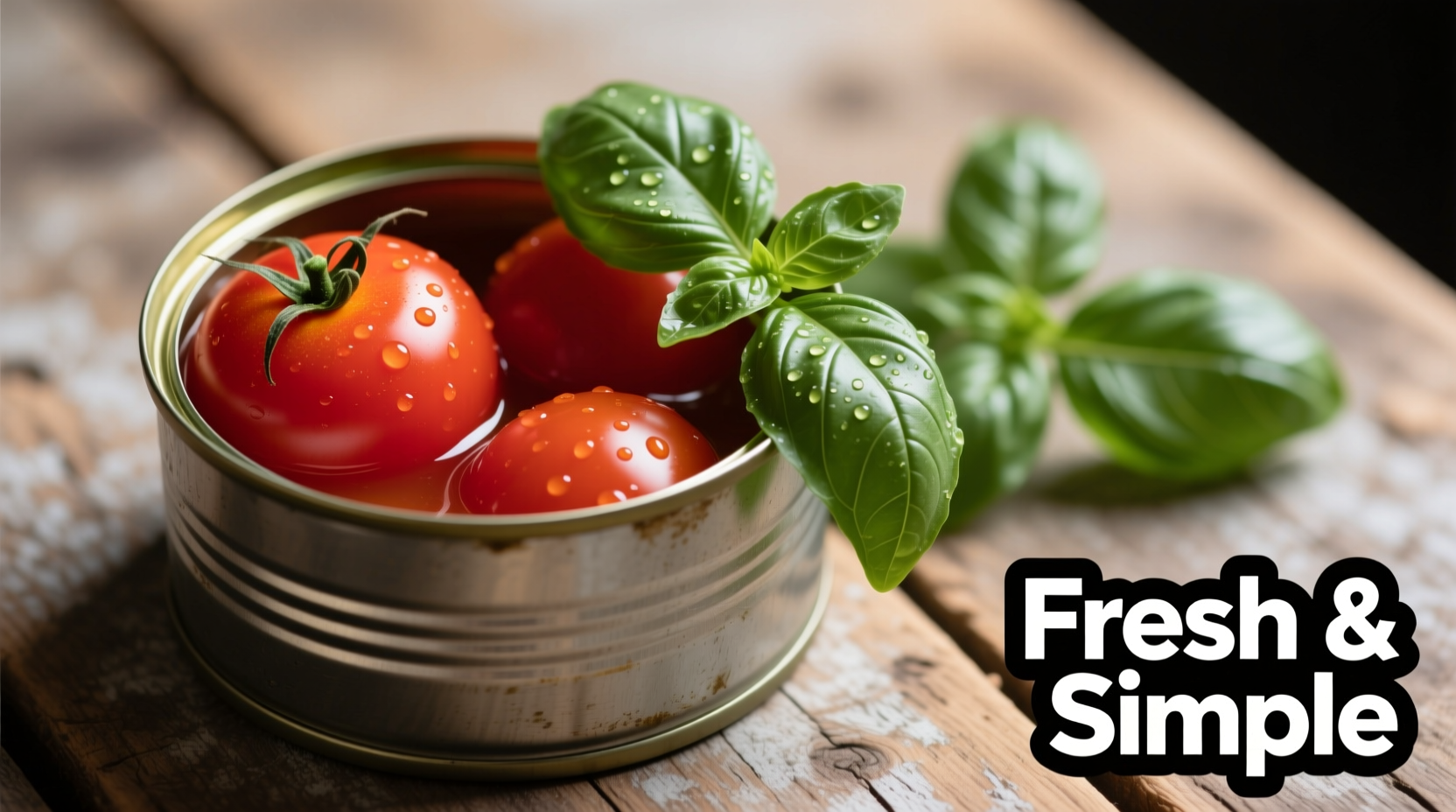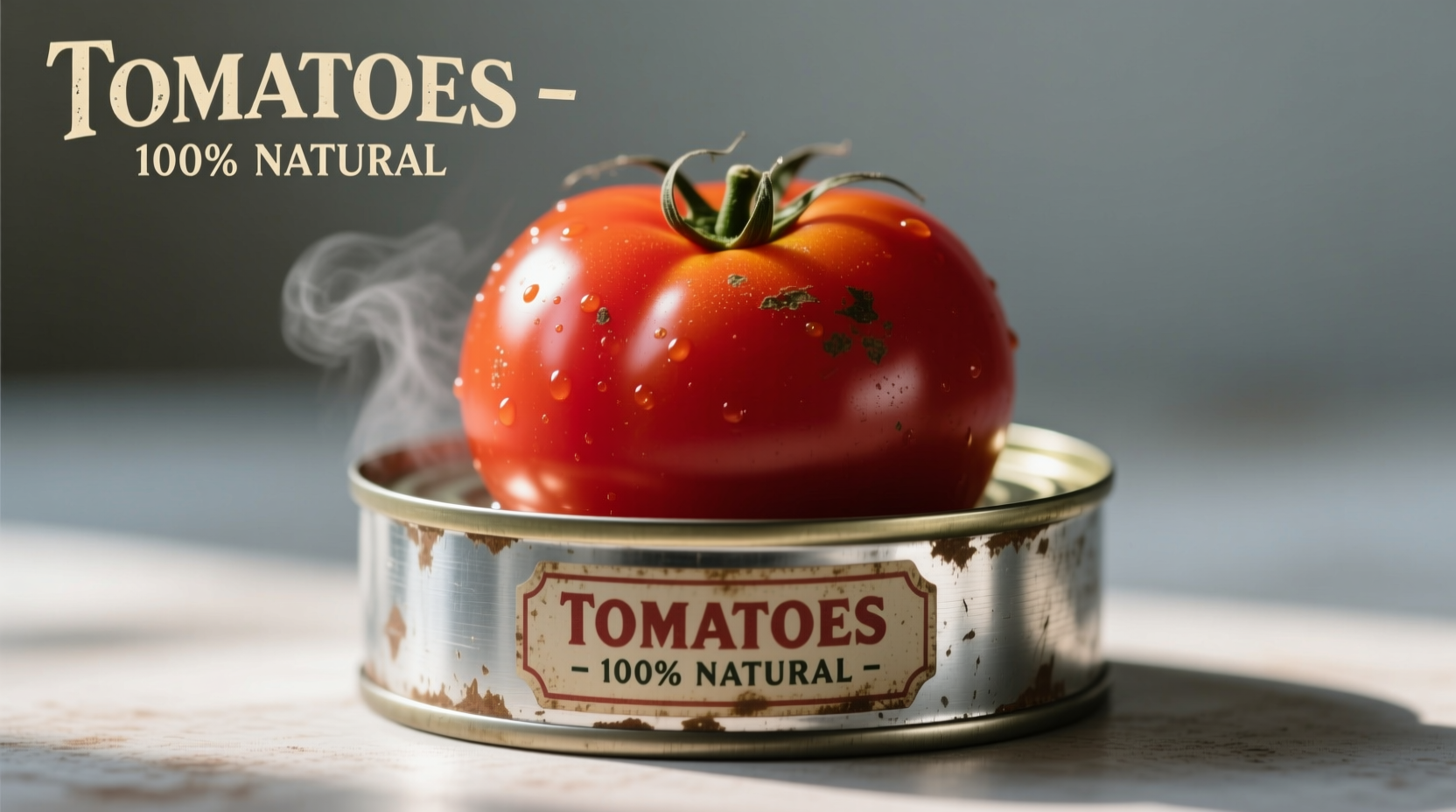Whole tomatoes in cans are peeled tomatoes packed in their own juice or tomato puree, preserving their shape and texture. They're ideal for sauces, stews, and dishes where you want to control the final texture by crushing or chopping them yourself. Unlike diced or crushed varieties, whole tomatoes contain no added calcium chloride, giving them a softer texture when cooked.
When you reach for a can of tomatoes, understanding what makes whole tomatoes unique can transform your cooking. These versatile pantry staples maintain their shape better than processed alternatives, offering superior flavor and texture control in your favorite recipes. Let's explore why professional chefs consistently choose whole canned tomatoes for serious cooking applications.
What Exactly Are Whole Tomatoes in Cans?
Whole peeled tomatoes are vine-ripened tomatoes that undergo minimal processing. After harvesting at peak season, they're briefly steam-treated to remove skins, then carefully packed into cans with either their natural juices or a light tomato puree. The canning process preserves summer-fresh flavor year-round without requiring added preservatives beyond citric acid for pH balance.
Unlike their diced counterparts, whole tomatoes contain no calcium chloride—a firming agent that prevents diced tomatoes from becoming mushy but also creates an unnatural texture when cooked for extended periods. This fundamental difference explains why whole tomatoes break down more naturally during cooking, creating richer, more complex sauces.

Whole Tomatoes vs. Other Canned Tomato Products
| Tomato Product | Processing | Texture When Cooked | Best Culinary Uses |
|---|---|---|---|
| Whole peeled tomatoes | Minimal processing, no firming agents | Naturally breaks down into smooth sauce | Marinara sauces, soups, stews |
| Diced tomatoes | Added calcium chloride for firmness | Maintains distinct pieces, can become rubbery | Salsas, quick dishes, cold applications |
| Crushed tomatoes | Mechanically crushed with added puree | Consistent texture from start | Quick sauces, pizza bases |
| Tomato puree | Concentrated cooked tomatoes | Thick, uniform consistency | Thickening sauces, braises |
Nutritional Profile and Safety Considerations
According to USDA FoodData Central, a 126g serving of whole canned tomatoes provides 31 calories, 1.5g of protein, and delivers 22% of your daily vitamin C needs. They're particularly rich in lycopene—the antioxidant responsible for tomatoes' red color—which becomes more bioavailable through the canning process.
Modern canning facilities follow strict FDA guidelines to ensure safety. The National Center for Home Food Preservation confirms that commercially canned tomatoes undergo rigorous testing to prevent botulism risks. Look for cans without dents, leaks, or bulging ends, which could indicate compromised seals.
From Field to Pantry: The Canning Timeline
Understanding the journey of whole canned tomatoes reveals why they maintain superior quality:
- Harvest (July-September): Tomatoes are picked at peak ripeness during summer harvest
- Processing (Within 24 hours): Immediate steam-peeling preserves flavor compounds
- Packing (Same day): Hand-sorted tomatoes packed in juice with citric acid
- Sealing and Sterilizing: Hermetically sealed cans heated to 194°F for precise time
- Quality Testing: Each batch undergoes pH testing and visual inspection
- Distribution (Within 72 hours): Rapid shipping maintains freshness
This efficient timeline—typically completed within 48 hours of harvest—locks in nutrients and flavor that would otherwise degrade during extended fresh storage.
Professional Cooking Techniques with Whole Tomatoes
When working with whole canned tomatoes, professional chefs employ specific techniques to maximize flavor:
- Hand-crushing method: Drain excess liquid, then manually crush tomatoes to maintain texture control
- Acid balance: Add a pinch of sugar only if needed—quality canned tomatoes rarely require this
- Simmering technique: Start with cold tomatoes in the pot to develop deeper flavor
- Layering flavors: Sauté aromatics first, then add tomatoes to build complexity
For the best results, avoid stirring too vigorously during the first 15 minutes of cooking. This allows the tomatoes to break down naturally rather than becoming watery. The natural pectin in whole tomatoes creates a better emulsion with olive oil, forming the foundation of a restaurant-quality sauce.
Storage Guidelines and Shelf Life
Proper storage maximizes both safety and quality of canned tomatoes:
- Store unopened cans in a cool, dry place (50-70°F) away from direct sunlight
- Use within 18 months for optimal flavor, though safe for up to 5 years
- Once opened, transfer to airtight container and refrigerate for up to 5 days
- For longer storage, freeze in portion-sized containers for up to 6 months
The USDA Food Safety and Inspection Service confirms that properly stored canned tomatoes maintain safety indefinitely, though flavor and texture gradually decline after two years. Always inspect cans before use—discard any with bulging ends, leaks, or foul odors.
Choosing Quality Canned Whole Tomatoes
Not all canned tomatoes deliver equal quality. When selecting products:
- Look for "whole peeled" on the label, not "stewed" or "petite cut"
- Check ingredients: should contain only tomatoes, tomato juice, and citric acid
- Choose BPA-free linings when possible (many premium brands now offer this)
- Consider origin—California and Italian tomatoes have distinct flavor profiles
- Opt for cans with visible tomato pieces rather than pure liquid
Food science research from the University of California Davis shows that tomatoes canned at peak season contain up to 40% more lycopene than off-season fresh tomatoes. This makes properly selected canned tomatoes not just convenient, but potentially more nutritious than fresh alternatives during winter months.
Common Misconceptions About Canned Tomatoes
Several myths persist about canned tomato products:
- "Canned tomatoes are less nutritious": Actually, lycopene becomes more bioavailable through canning
- "All canned tomatoes taste metallic": Quality brands use proper linings to prevent flavor transfer
- "Fresh tomatoes always beat canned": Out-of-season fresh tomatoes often lack flavor compared to peak-season canned
- "Canned tomatoes contain preservatives": Modern canning relies on heat processing, not chemical preservatives
Understanding these facts helps home cooks make informed choices about incorporating whole canned tomatoes into their cooking repertoire.











 浙公网安备
33010002000092号
浙公网安备
33010002000092号 浙B2-20120091-4
浙B2-20120091-4